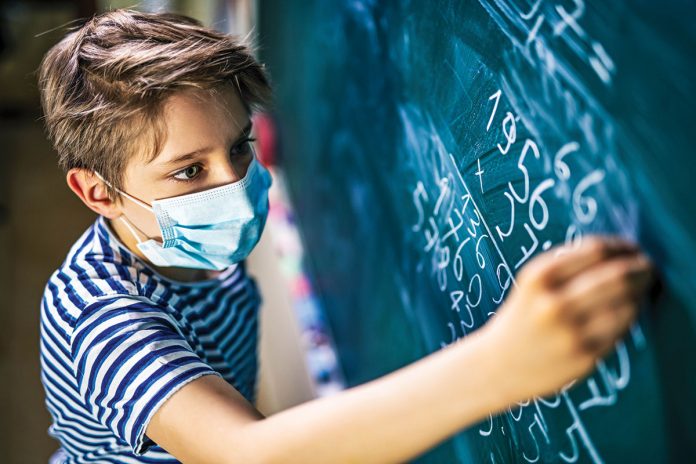The National School District governing board on July 21 unanimously approved its COVID-19 safe reopening plan with one amendment, all students in the K-6 district are required to wear masks unless they have a medical waiver.
Beginning its new school year virtually on Aug. 24, National School District Superintendent Dr. Leighangela Brady said the district is prepared, virtually and when a safe reopening can happen. She pointed out that every general measure required by the state and the county were met or exceeded.
“We obviously won’t be able to go back to full classrooms, but it will be a phased-in model to full classrooms,” said Brady. “With the hybrid we will put in as many students as we can with social distancing requirements and, as those restrictions get lifted, we’ll be bringing more and more kids back to school.”
Brady said she hopes kids will be in classes at the end of the year but, like other districts, it is not going to have a full-time option for students. When schools suddenly shut down over spring break, Brady said it was serendipitous with the district’s timeline, as they had already evolved with available technology that the teachers and students were utilizing daily.
“We had a lot of things in motion when schools shut down in March,” said Brady. “We have rolled out personal devices for every student in [traditional kindergarten] to sixth grade. So every single student already had a device in the classroom that they were working on.”
Brady said safety features including only logging into the district’s network and child protective filters were in place, so students are not looking at anything inappropriate.
Brady said its existing programs are adaptive to individual levels. The program tracks progress. If a student is struggling, the program gets easier. If a student is progressing, the program increases, challenging the student’s skills.
“It doesn’t make a student stay at that level,” said Brady. “Teachers were already using these programs to supplement learning, so they were already trained and knew how use the program.”
Brady said the school is active when it comes to equity and access, realizing many students in the district did not have access to home computing devices and internet. She said the board voted to start letting students take home devices in January, starting with the sixth graders and moving forward with the fifth graders when the pandemic hit.
“Compared to many districts, many of our students do not have access to internet at home,” said Brady. “For the past two years we have been heat mapping every one of our students for internet access.”
The district participates with Cox to Computers, Computers to Students program which gives lower income internet fee for needier families. Brady said the district identified and connected many families over the past two years.
“When the pandemic hit, we knew exactly which students needed internet and were able to provide hotspots with our relationship with T-Mobile. Every student in the district had a device and access to the internet right after spring break,” said Brady. “Instead of bringing in our fifth graders, we brought in all of our grades.”
Brady said teachers were happy with it and were already trained in Google classroom. It has been a Google district for three years now. All on a secure domain.
“We were poised and ready to go, unlike other districts who were not moving in that direction,” said Brady. “I felt that it was seamless. Teaching from home can be a challenge. You do not have everything for you that you would have in a classroom, so they had to design some of those systems. But the systems on technology were solidly in place.”
Brady said they tracked the student’s progress. She said many districts did a pass/fail and that structure was lacking in grading.
“We did not hold kids and teachers accountable for grading the third trimester because it was such a drastic shock and we knew that there was fear that a lot of people were feeling at home,” said Brady. “This pandemic was different than anything that none of us had ever experienced. But what we did do was we administered an assessment that we had given in the fall and in the winter. We found was little learning loss. Students either met or exceeded the expected growth at a high percentage.”















